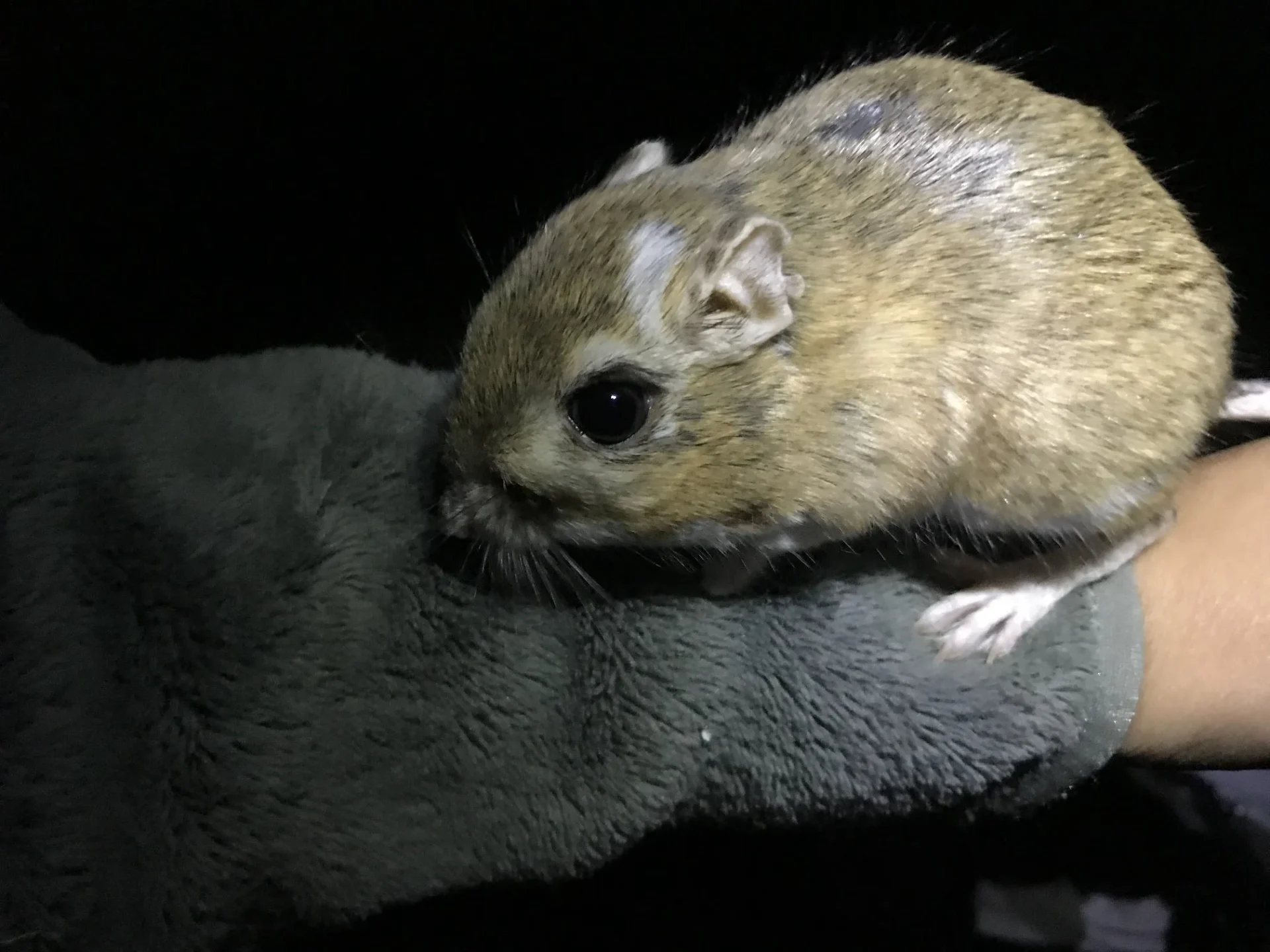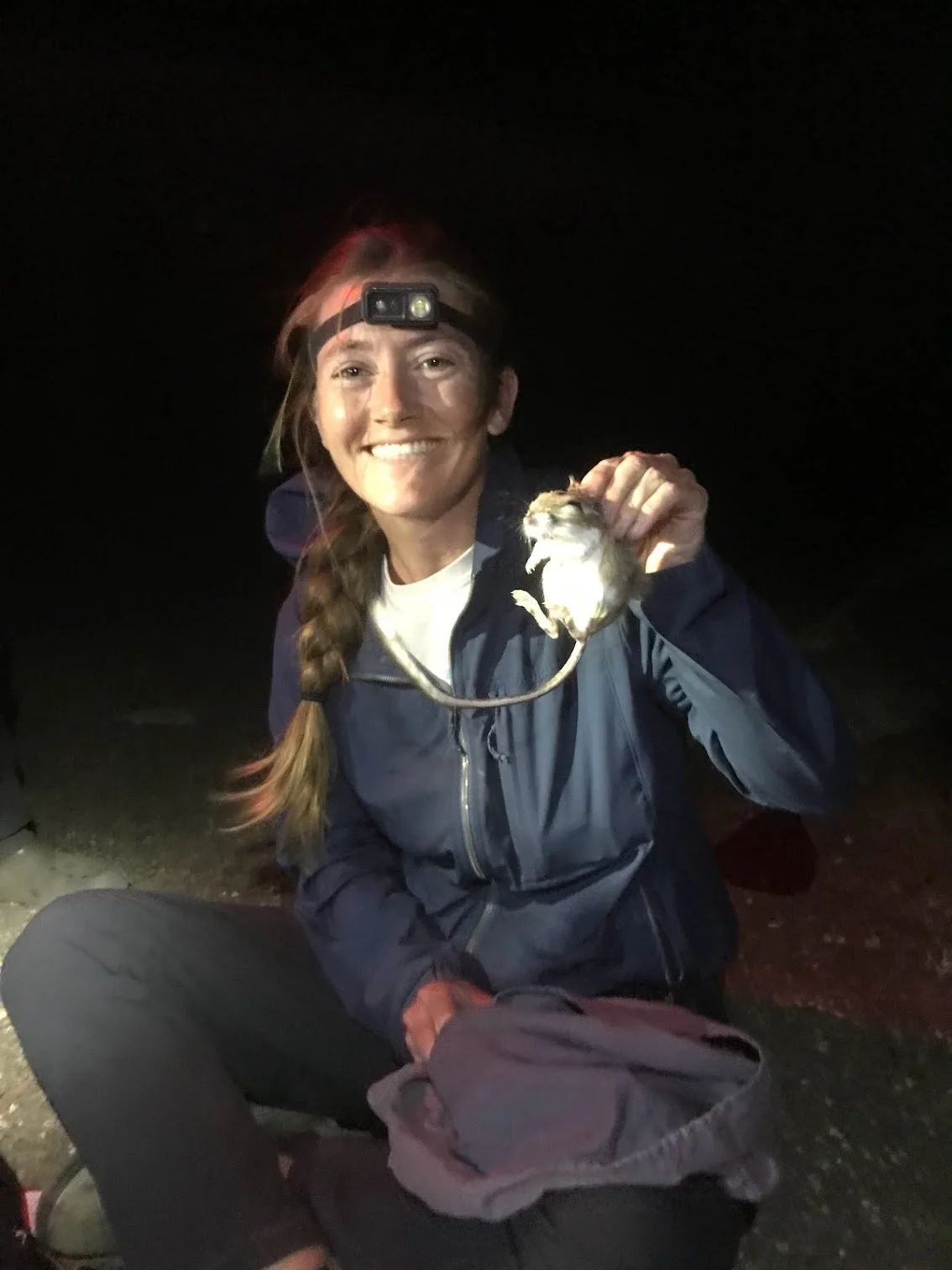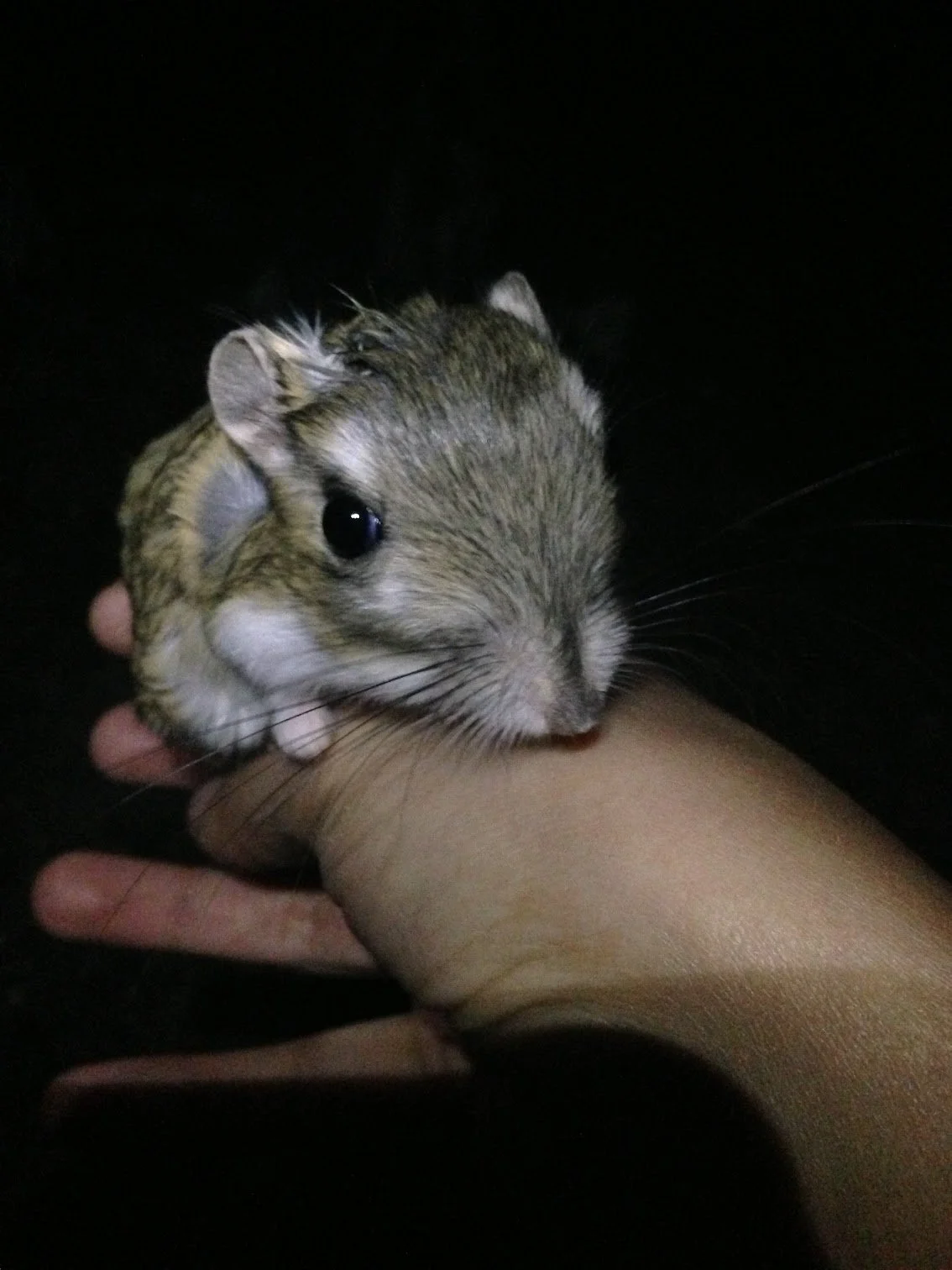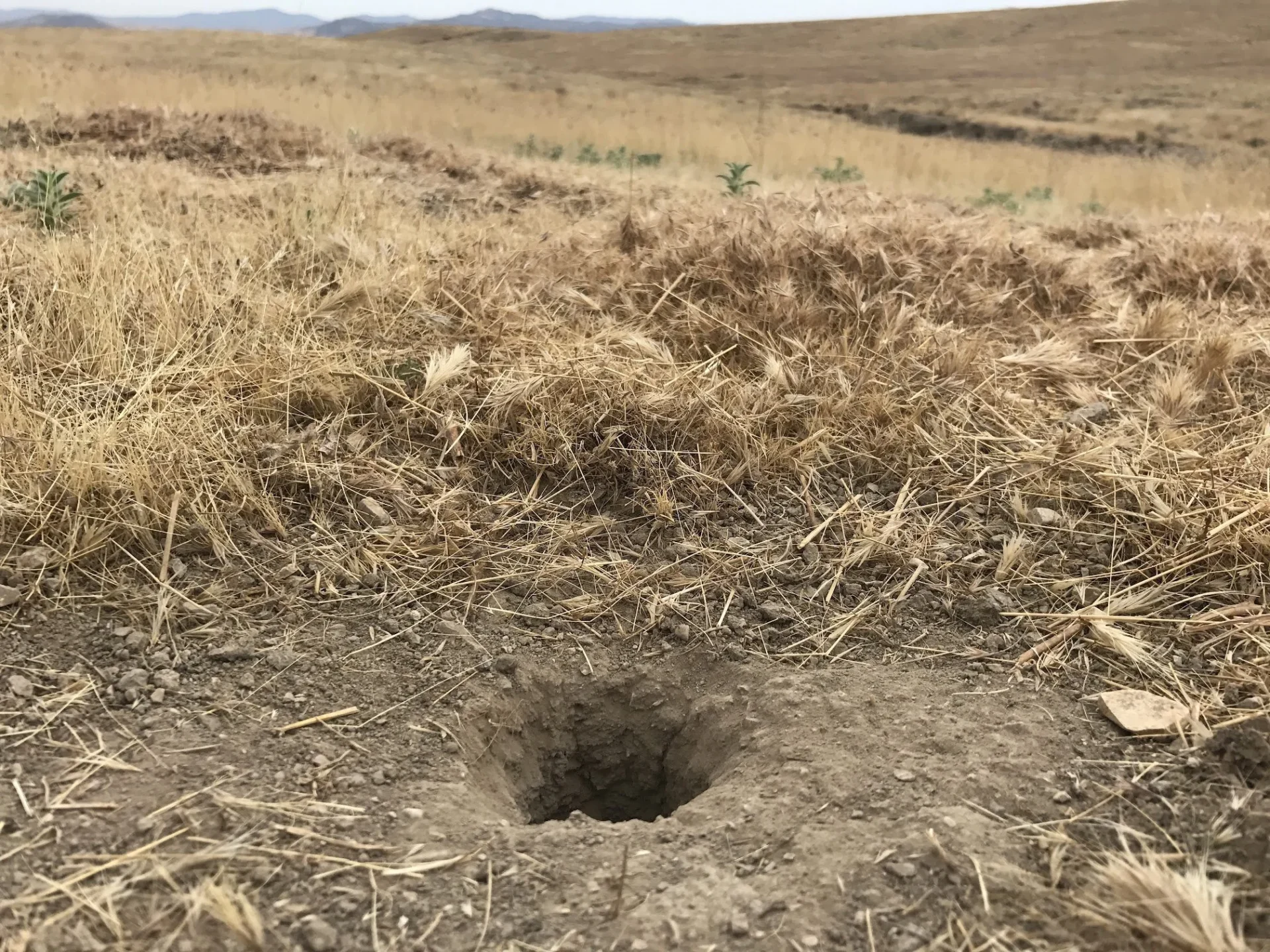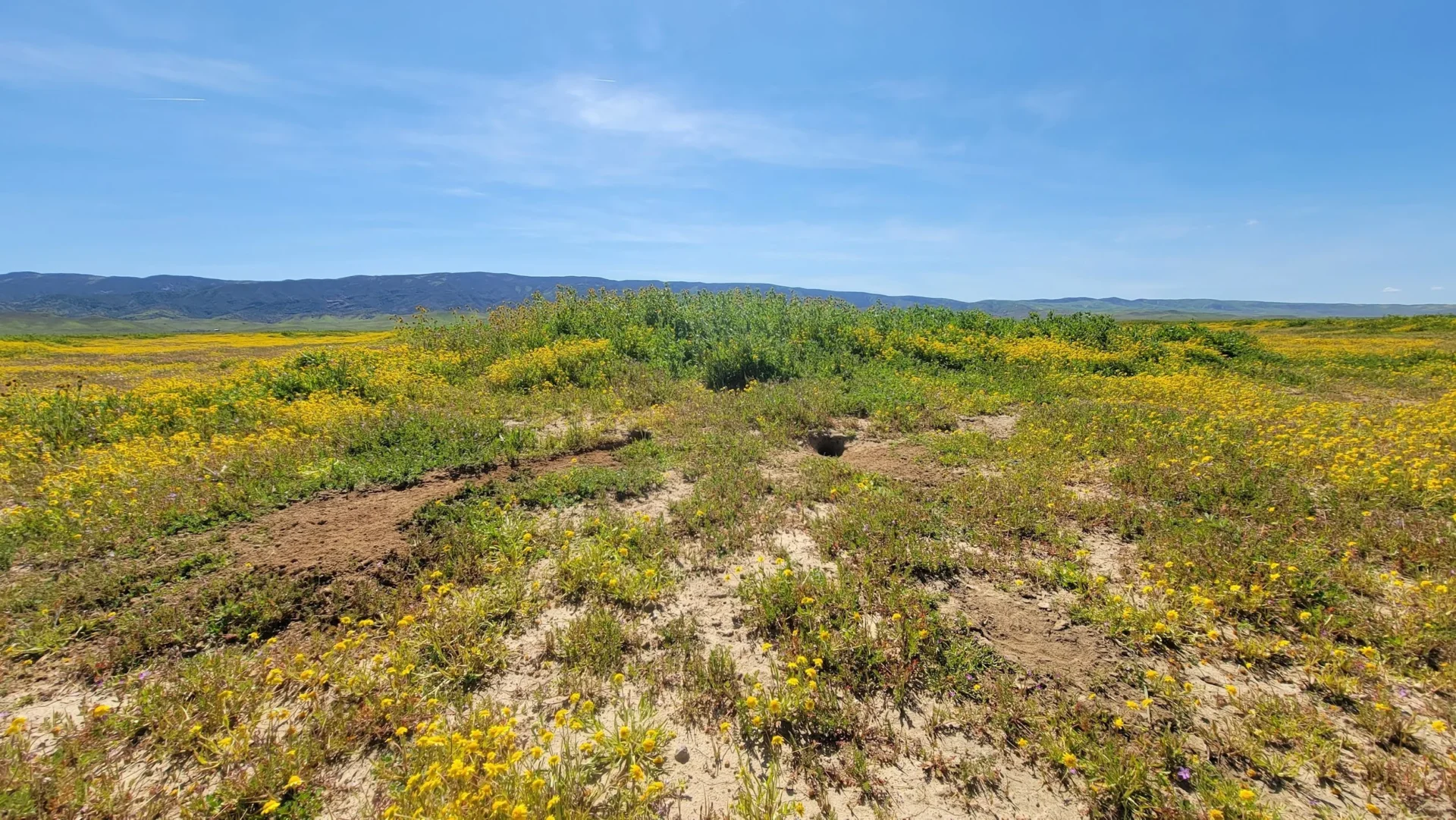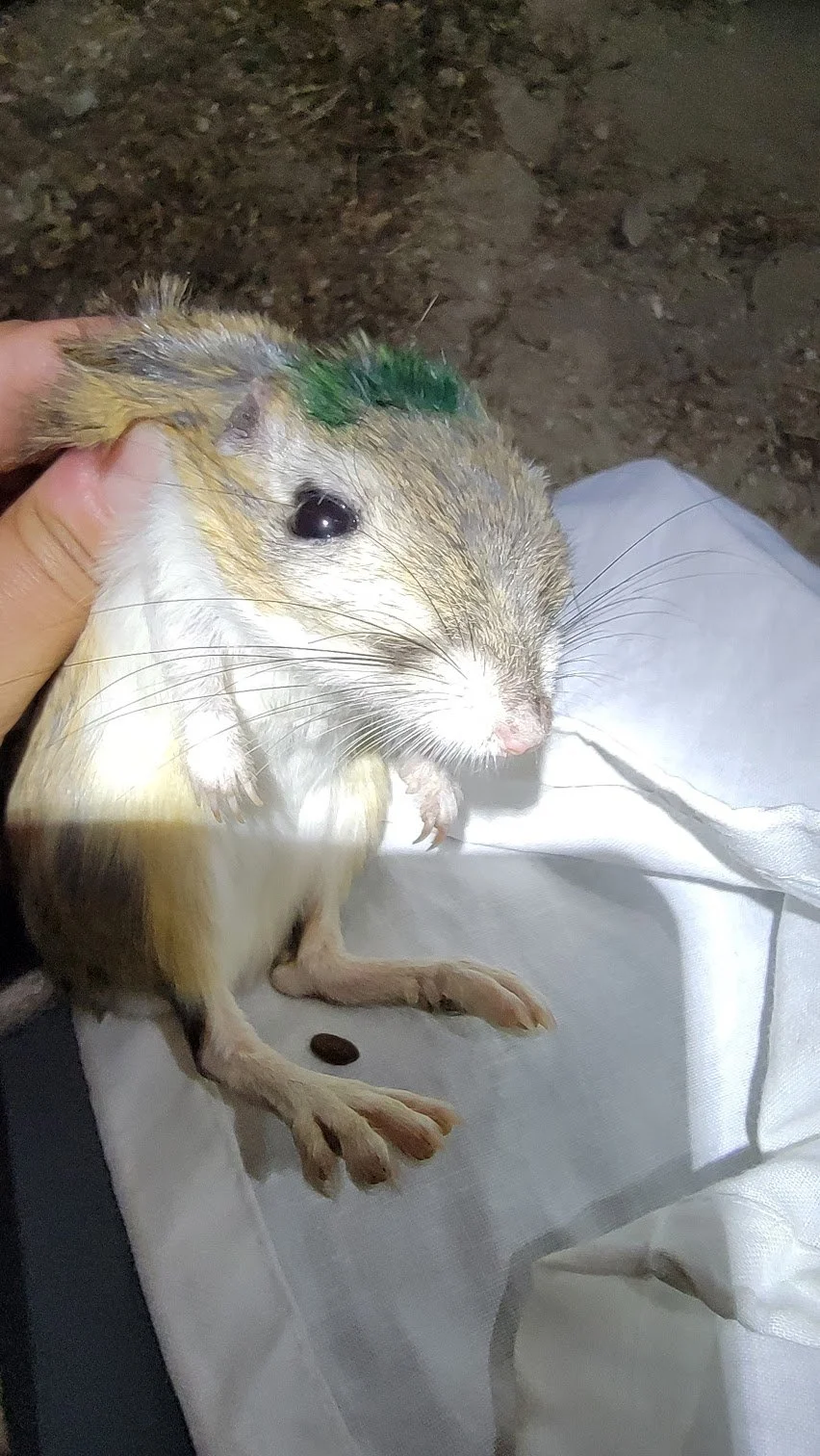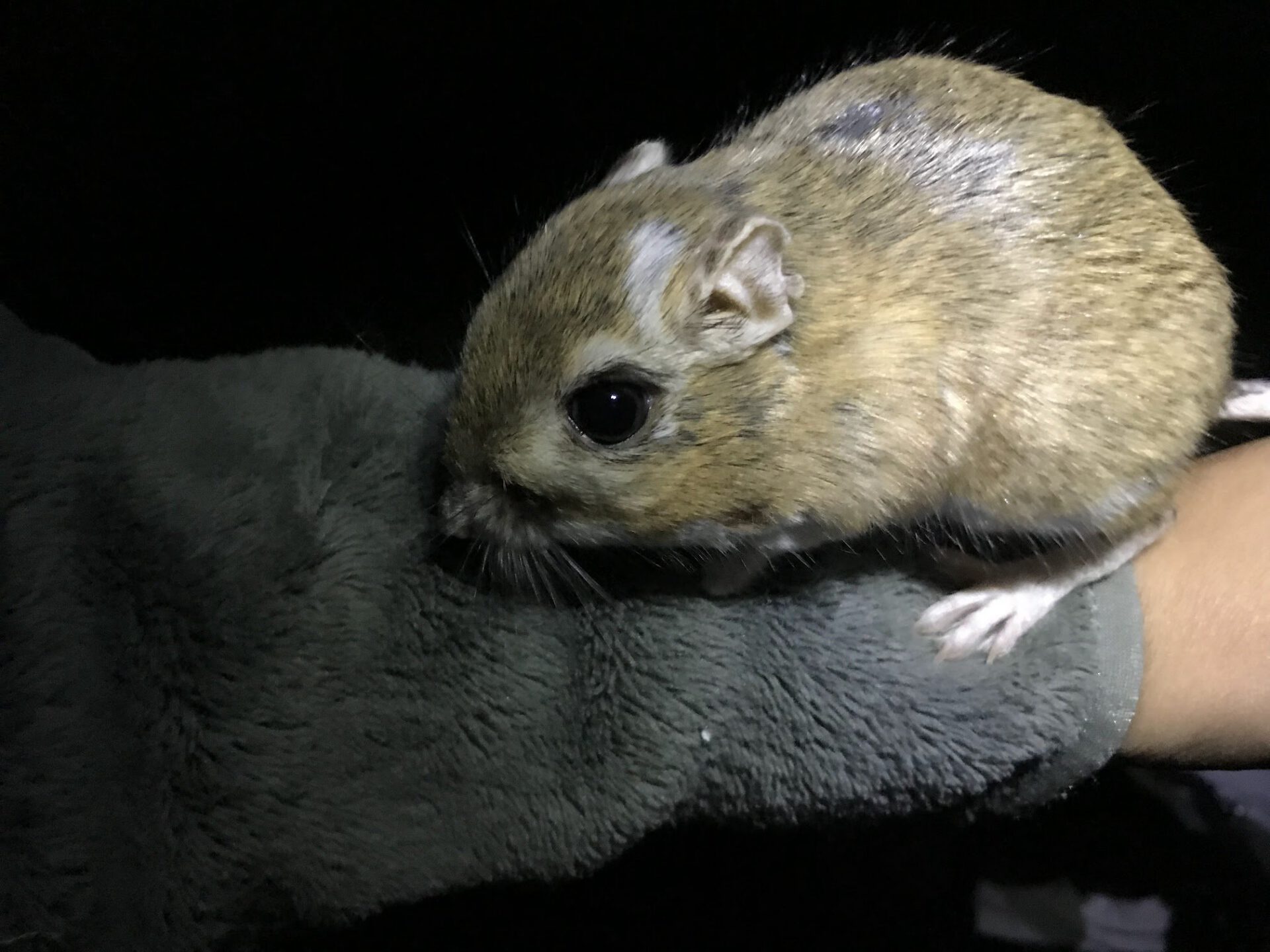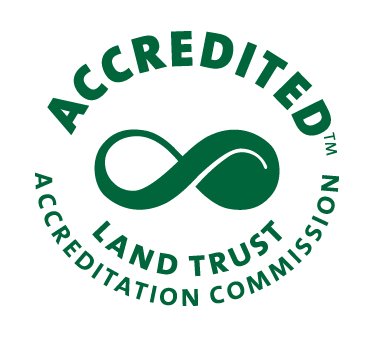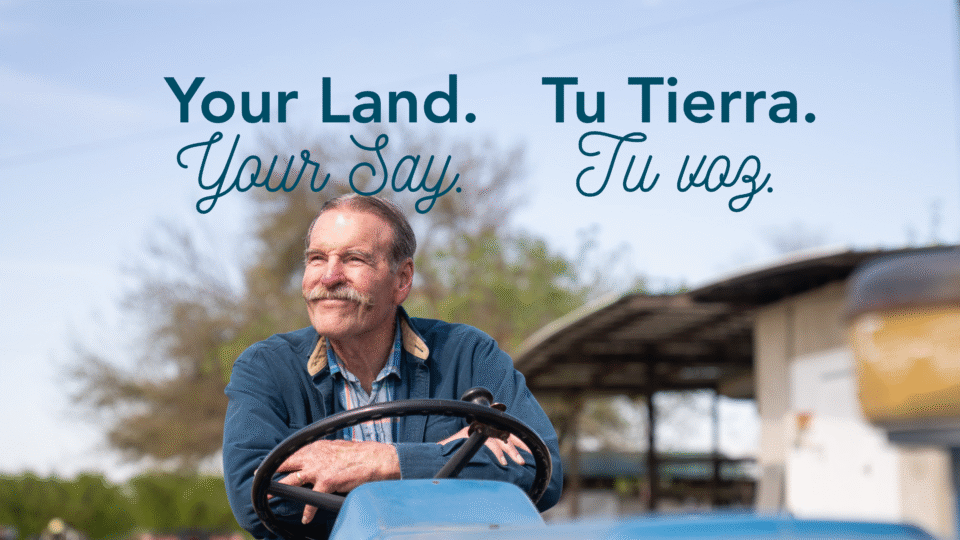Written by Camdilla Worth & Ian Axsom
Sequoia Riverlands Trust manages approximately 9,000 acres in the Carrizo Plain, California’s largest remaining grassland and home to many endangered and threatened species endemic to California. This land, known as the conservation lands, were protected over a decade ago, as a mitigation measure against the impact of the development of California Valley Solar Ranch.
SRT’s ultimate goal in protecting this land is to conserve and enhance, in perpetuity, a diverse array of native plant and animal species and their habitats found on the conservation lands and throughout the Carrizo Plain. One species of particular concern on the conservation lands is the giant kangaroo rat (GKR), a federally endangered, keystone species that creates and modifies the habitat around them (known in ecology as a “ecosystem engineer”).
Giant kangaroo rats are small rodents about the size of a person’s fist. Their name comes from their large back legs which they hop around on similar to kangaroos. They have cheek pouches which they use to hold seeds like hamsters.Despite living in dense populations, individuals of this nocturnal species are territorial of their burrows and chase away competitors. They are granivorous, meaning they primarily eat seeds, which they collect, dry and store in underground chambers in their burrows. As a desert adapted species, they do not drink any water, instead making their own water metabolically from their seed-based diet.
GKR are endemic to California, mainly along the western edge of the San Joaquin Valley, in the Carrizo Plain and in the Cuyama Valley. Historically, this species was widespread in these areas but due to habitat loss caused by humans, they are now isolated to six main subpopulations and occupy less than 5% of their original habitat. The isolation of these subpopulations reduces genetic diversity and restricts movement in response to climate change making them more vulnerable to extinction. The Carrizo Plain subpopulation is notable because it is the largest population that exists on contiguous protected lands. While the Carrizo Plain National Monument makes up the bulk of these protected lands, the conservation lands that SRT manages provide vitally important additional protected habitat.
GKR are considered a keystone species because they have an outsized impact on the ecosystem relative to their biomass, due to the fact that they are a major food source for many medium sized predators, including the federally endangered San Joaquin kit fox, as well as the various ways they engineer their habitat. GKR engineer their habitat in three key ways: 1) creating extensive burrows underground which mixes the soil, altering the soil chemistry and soil moisture. The burrows also provide shelter for many other species from predators and environmental conditions. 2) grazing vegetation (almost like mowing grass) which lowers biomass in patches, creating a mosaic of open and densely vegetated areas.3) collecting seeds which they dry and store in their burrows for food. Some seeds germinate before being eaten which changes the variety of plant species around GKR burrows compared to the surrounding habitat.
The Carrizo Plain was historically dominated by native bunch grasses and shrub lands, with season forbs such as wildflowers in between. This was a fairly open landscape that was easy for small and medium sized animals to move around in. While indigenous people stewarded the land in the Carrizo Plain area for millennia, after colonization by Europeans, the landscape dramatically changed with the arrival of non-native annual grasses which began to dominate the habitat in dense, unbroken carpets, making movement much harder for many native species. This added difficulty means animals spend more energy when moving and slows them down making them more vulnerable to predation. Where they are present in great enough numbers, GKR help to open the landscape for these species.
Since beginning management in 2015 SRT has documented an increase in GKR density on the Preservation Lands. In order to quantify the increase in GKR activity we were observing we surveyed GKR in 2018 and again in 2023 by using mark-recapture. Mark-recapture allows us to make inferences about giant kangaroo rat abundance in a given area, while precinct surveys allow us to estimate the amount of GKR activity in a given area by humanely trapping a small number of individuals from the population, marking the individuals with with individual marks (we used non-toxic sharpie to mark GKR with unique codes on their fur), and releasing the marked individuals back into the population.
We conducted mark-recapture surveys in 2018 and 2023 on seven plots on the conservation lands. All captured animals were given a unique mark, weighed, aged, sexed, head and hind foot measured, and reproductive status determined before being released. We captured 105 individual animals in 2018; we mainly captured Heerman’s kangaroo rat, San Joaquin pocket mice, and California pocket mice. We captured just two giant kangaroo rat individuals. In 2023, we captured 33 individual animals, including Heerman’s kangaroo rat, San Joaquin pocket mice and deer mice. This time,we captured 12 individual giant kangaroo rats. Both the total number of GKR captured and the proportion of GKR to other species captured was much higher in 2023 than in 2018.
So, why is this critically endangered rodent increasing on SRT conservation lands? One theory we have is that prescribed grazing by cattle may be facilitating greater GKR presence on the landscape. As cattle reduce biomass on previously overly vegetated habitat, the environment is opened up for small mammals such as GKR. GKR are in turn further transforming the environment through their ecosystem engineering, creating a positive feedback loop of habitat improvement which benefits the entire Carrizo Plain ecosystem. Now GKR are stewarding the land themselves through their ecosystem engineering activity. Together, SRT is collaborating with this industrious small rodent to steward the land for native species in an effort to maintain California’s biodiversity far into the future.
